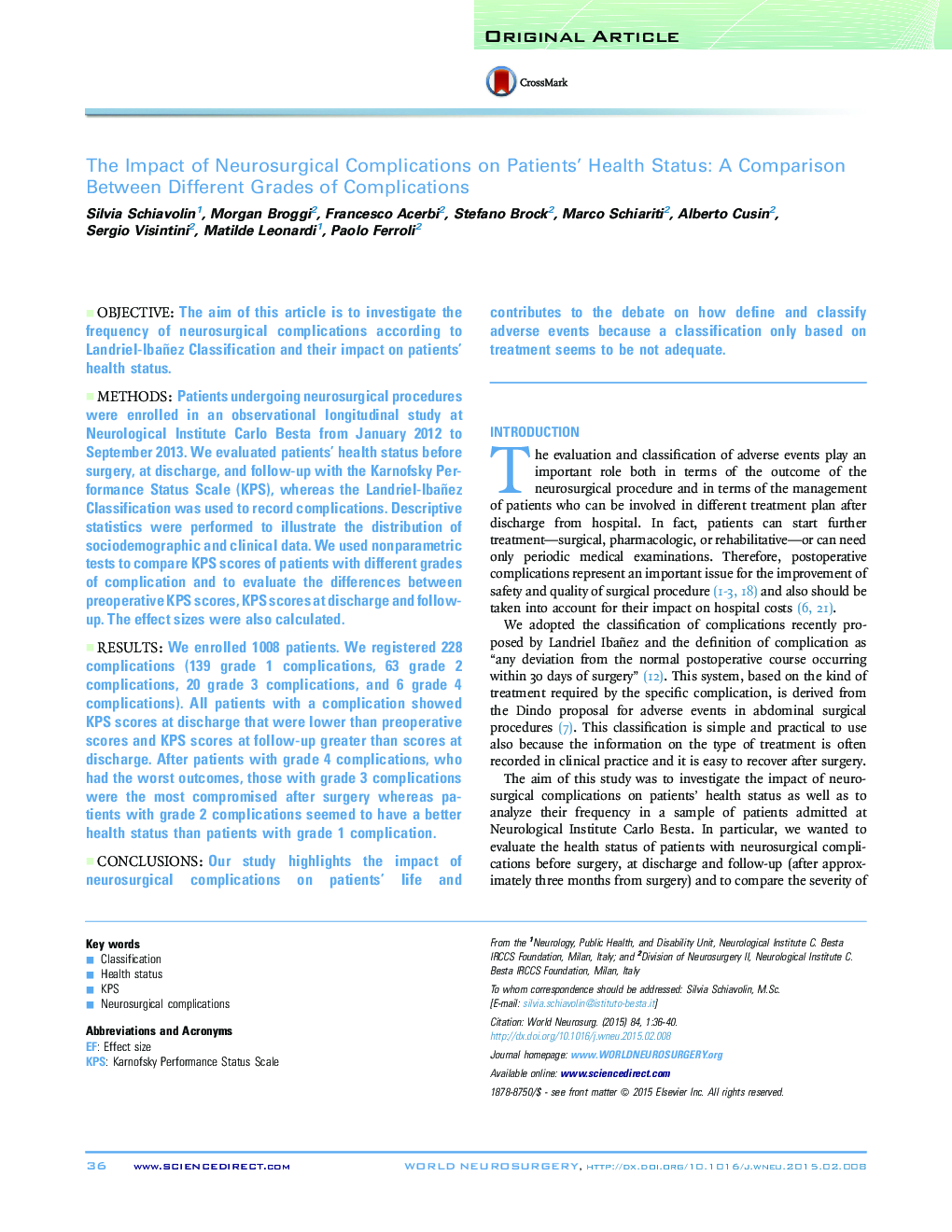| Article ID | Journal | Published Year | Pages | File Type |
|---|---|---|---|---|
| 3095061 | World Neurosurgery | 2015 | 5 Pages |
ObjectiveThe aim of this article is to investigate the frequency of neurosurgical complications according to Landriel-Ibañez Classification and their impact on patients' health status.MethodsPatients undergoing neurosurgical procedures were enrolled in an observational longitudinal study at Neurological Institute Carlo Besta from January 2012 to September 2013. We evaluated patients' health status before surgery, at discharge, and follow-up with the Karnofsky Performance Status Scale (KPS), whereas the Landriel-Ibañez Classification was used to record complications. Descriptive statistics were performed to illustrate the distribution of sociodemographic and clinical data. We used nonparametric tests to compare KPS scores of patients with different grades of complication and to evaluate the differences between preoperative KPS scores, KPS scores at discharge and follow-up. The effect sizes were also calculated.ResultsWe enrolled 1008 patients. We registered 228 complications (139 grade 1 complications, 63 grade 2 complications, 20 grade 3 complications, and 6 grade 4 complications). All patients with a complication showed KPS scores at discharge that were lower than preoperative scores and KPS scores at follow-up greater than scores at discharge. After patients with grade 4 complications, who had the worst outcomes, those with grade 3 complications were the most compromised after surgery whereas patients with grade 2 complications seemed to have a better health status than patients with grade 1 complication.ConclusionsOur study highlights the impact of neurosurgical complications on patients' life and contributes to the debate on how define and classify adverse events because a classification only based on treatment seems to be not adequate.
